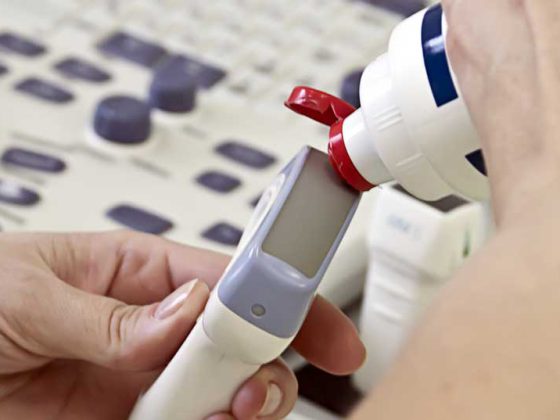What is quality in family practice? This was one of the guiding questions addressed at the 7th Congress of the Association of Young Family Physicians Switzerland in Thun. What does “care” mean – a word for which the German language offers a whole range of translations with different connotations, thus revealing the many facets of the family doctor profession. It was no coincidence that the motto “Yes we care” borrowed from Barack Obama’s programmatic campaign slogan.
Almost 500 good-humored young physicians met in Thun to exchange ideas, network and receive further training. In addition to the practical inputs on practice foundation and management and many professional seminars, the participants intensively discussed the ambivalence of the family doctor profession between self-commitment and private life, between non-delegable responsibility as a physician and bureaucracy, between intuition and expertise.
“The evidence-based medicine (EBM) model is ultimately not a 100% guarantee of quality,” Bruno Kissling, MD, Bern, led the panel discussion with ethnologist Dr. phil. Andrea Abraham, Zurich, from. Experience, expertise and intuition oscillate. “In family medicine, quality is not quantifiable, but only perceptible in the well-being of the patient. A concept of quality that follows industrial logic cannot be reconciled with the daily work in family practice,” says Kissling. Often the patient has other health concepts and wants to be perceived holistically in order to be able to accept treatment offers. “An uncertainty factor always remains – an essential characteristic that you buy into with this profession.” Intuition contributes not insignificantly to the choice of the right therapy – however: “First, you have to be able to and know a lot as a doctor.”
The role of intuition was confirmed by Hans Jakob Zehnder, MD, co-chief physician at the hospital in Riggisberg, in a panel discussion on the role of the family doctor in society. Difficult patients are usually people who are afraid, he said. Lack of cooperation, special attention requirements or the expectation of patients to be available 24×7 can also push family doctors to their limits – often they have to force themselves to change their perspective. At the same time, this is the most satisfying thing about being a family doctor: as a family doctor, you have the opportunity to accompany a patient over a long period of time, to learn about his or her social background, and to get an impression of the possible conflicts a person is facing at work, in the family, or in the village community. With these insights, primary care physicians are better able to understand patient attitudes and provide holistic patient care. For this reason, Zehnder also emphasizes home visits. Here, one would sometimes learn more about the patient than in long conversations in the practice rooms.
For Zehnder, continuing education plays a key role in consulting competence. Of course, it is not a matter of being able to perform every operation oneself, but one must know what is important in postoperative care and, as the patient’s medical confidant, one must be able to advise him adequately. Doctors should jump over their shadows if necessary and ask colleagues for support, including accepting criticism from younger colleagues. He warns against doing something that cannot be done in principle, echoing Kissling’s admonition.

However, the job of a family doctor sometimes requires courage. A few months ago, for example, Zehnder was assigned to serve as primary care physician for about 150 fluctuating asylum seekers at a transit center in Riggisberg. At that time, there were few recommendations on how to proceed with regard to primary care. The people came from different societies, some were traumatized, and communication was also often not possible. The most common indications were related to skin diseases, orthopedic problems and infections. There have been a few puzzles to solve, but this is a matter of training – and a team that also has to have a high level of up-to-date technical qualifications.
Where are the boundaries?
The question of demarcation is always important in the medical profession, he said. Zehnder has also been personally involved in the care of asylum-seeking refugees, for example when he made his own house available as accommodation after the closure of the transit center. Situations were particularly difficult when patients with severe health impairments were deported back abroad. Zehnder made it very clear how helplessly one as a treating physician sometimes has to watch people being passed around by the bureaucracy, “like hot potatoes.” This also affects people who urgently need security and continuity in order to have a real chance of survival.
Zehnder explained that despite an outstanding commitment, boundaries must be consciously drawn. He does not take his patients into private. Family, friends, hobbies would have their place, among other things, in marking these boundaries.
The pediatrician Dr. med. Heidi Zinggler Furrer, Chur, addressed the balance between her roles as doctor, wife and mother in her very personal and also impressive presentation. She reflected on the term “care” with regard to patients, to her team, to her children, and to herself, and made it very clear: all relationships must be balanced, every area of life must be cared for. “Care” also includes self-care and sometimes, therefore, the ability to distance oneself.
The family doctor as helmsman
In his video message, Prof. Dr. med. Thierry Carrel, Bern, emphasized the special role of the family doctor as a long-term companion of patients. “Specialists tend to be passersby, whereas a primary care physician is often a better judge of what therapy fits a patient,” Carell said. Zehnder confirmed this role in a skeptical note on health centers becoming more popular with younger primary care physicians: For the “transient” patient, a health center is a viable solution, he said. Patients with longer-lasting treatments and complex settings, however, ran the risk of being literally “sucked up” – passed around – by healthcare institutions. “Such patients need the guidance of a central medical advisor, and that is the primary care physician,” Zehnder’s clear statement said.
Source: 7th JHaS Congress, 29 April 2017, Thun
HAUSARZT PRAXIS 2017; 12(5): 38-39












